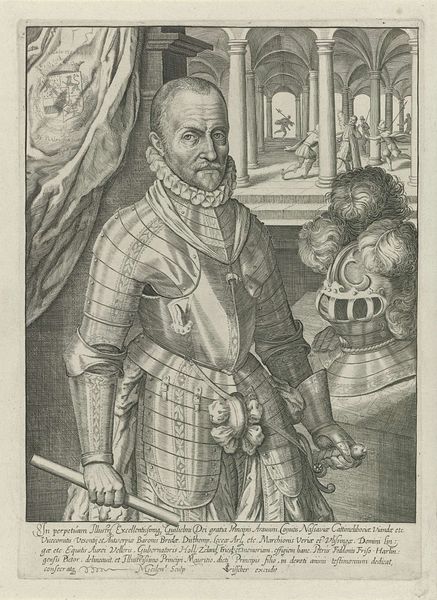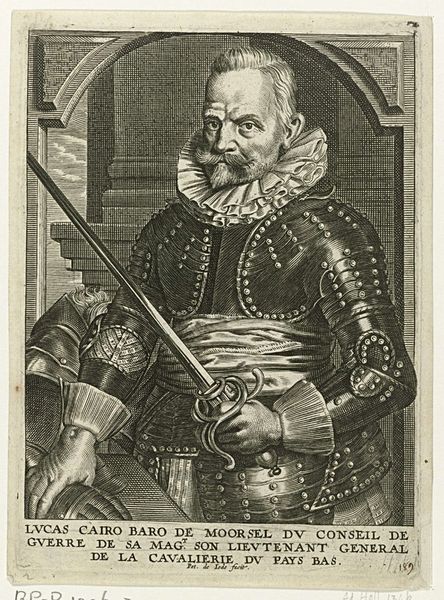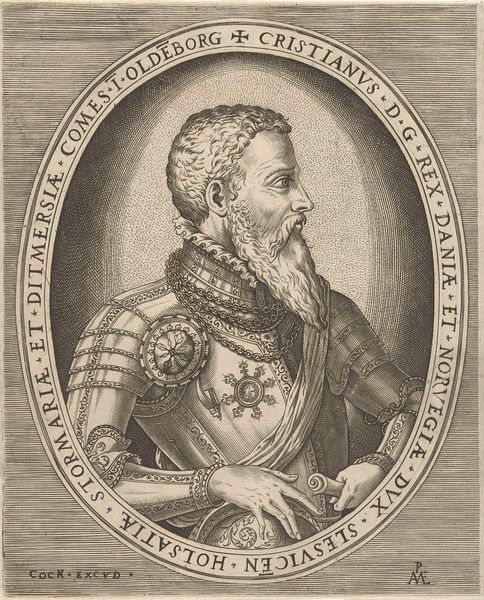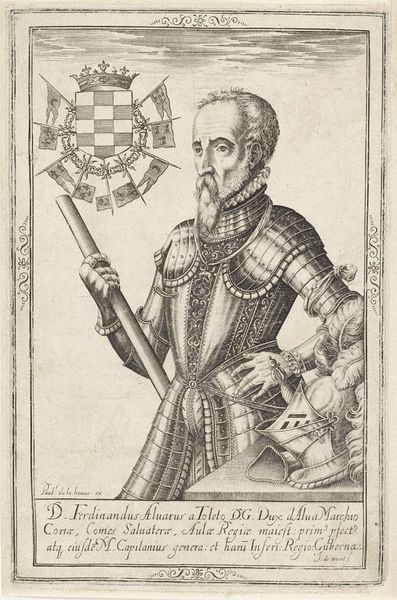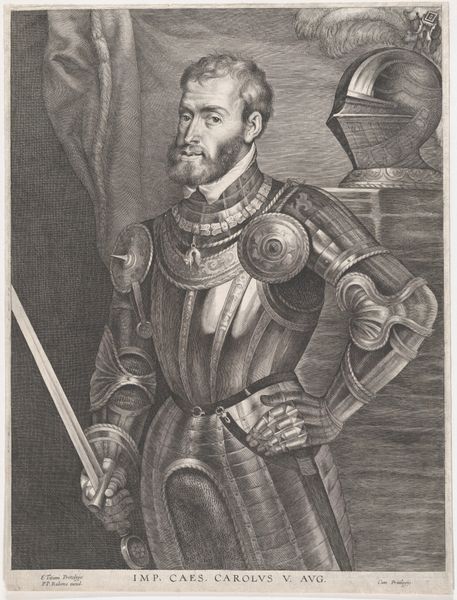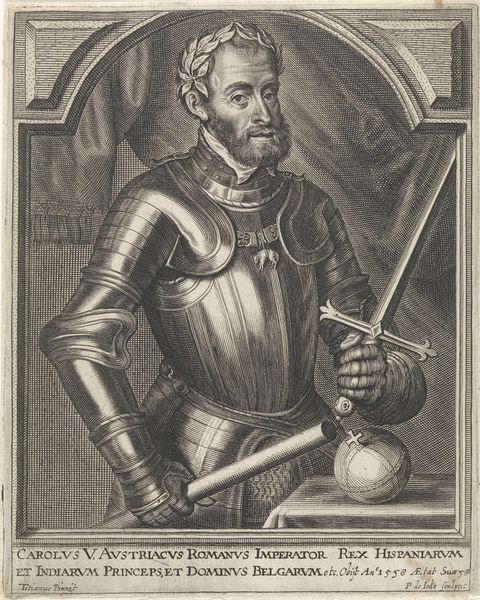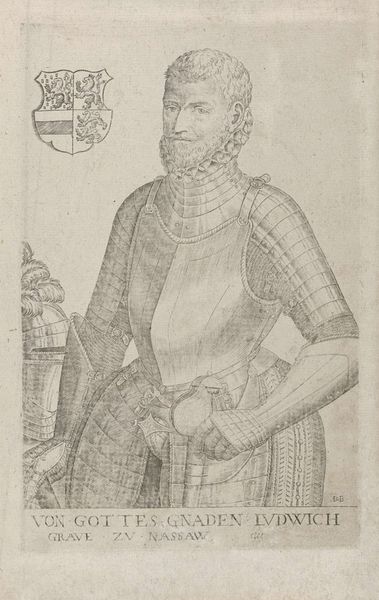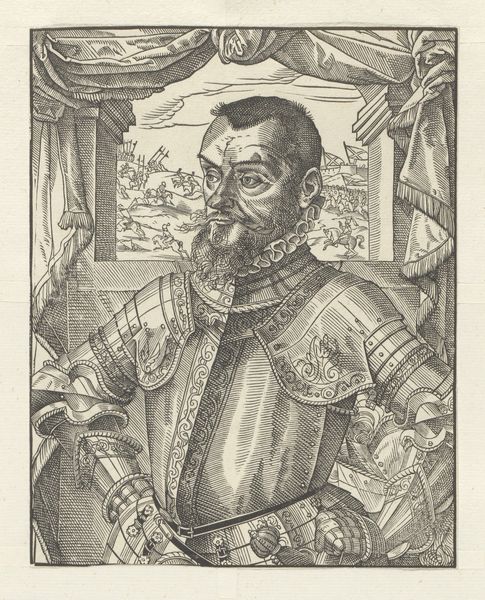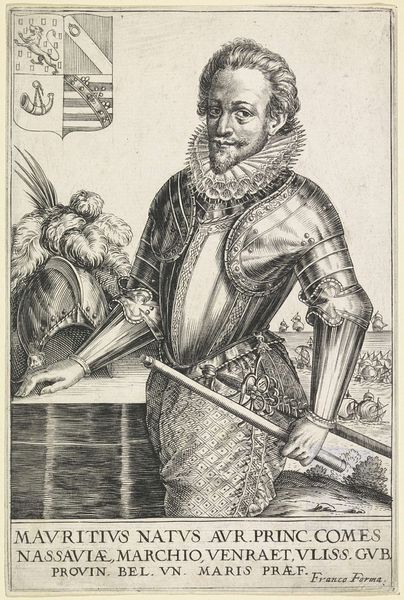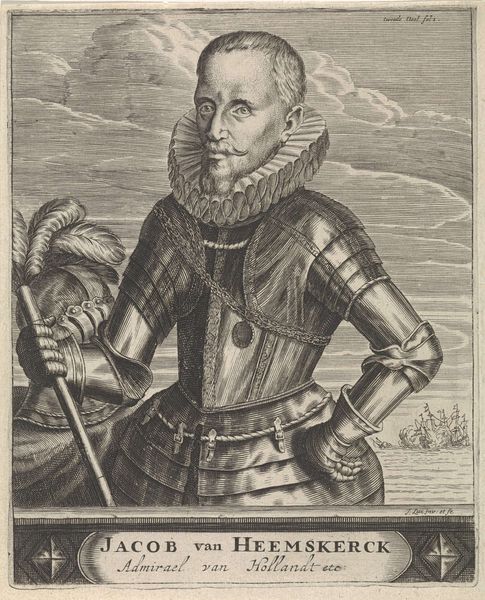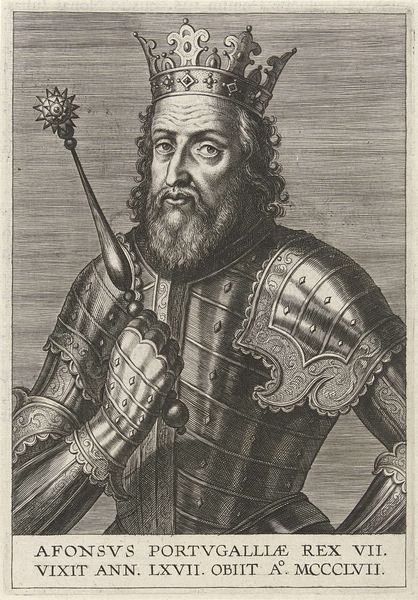
print, engraving
#
portrait
# print
#
11_renaissance
#
history-painting
#
northern-renaissance
#
academic-art
#
engraving
Dimensions: height 188 mm, width 121 mm
Copyright: Rijks Museum: Open Domain
Curator: Here we have "Portret van Willem I, prins van Oranje," or "Portrait of William I, Prince of Orange," a print made around 1595. Editor: My immediate feeling? Melancholy. It's a striking image, so precise and detailed, yet the monochromatic nature makes it feel distant, almost like peering into a fading memory. All those intricate lines composing his armour… it’s impressive but also somehow weighty, doesn't it seem to box him in? Curator: That weight is partly historical, of course. This image of William the Silent is steeped in symbolism. Consider the armour, its representation wasn't just about physical protection; it was a visual declaration of power, status, and readiness for battle. Also notice the family crest at the top corner! It's meticulously rendered, wouldn’t you agree? It roots him within a lineage, a whole political inheritance. Editor: Exactly! It's like a visual language. The crest is fascinating: it signifies dynastic claims, weaving a story of land, power, and the right to rule. But looking closer... see how the lines seem to multiply? There’s so much going on visually in that tiny space. It makes me wonder about the psychological effect on someone seeing this image centuries ago versus what we feel today. Were they similarly overwhelmed, or did they read it more fluently, immediately grasping its embedded narratives? Curator: It’s also a masterful engraving! This Northern Renaissance style used intricate lines to shape form and volume on a flat plane. This must have been reproduced widely. I imagine this kind of portraiture did wonders in shaping public perception. What do you think it communicated, symbolically speaking, back then? Editor: Oh, absolutely, he looks like the embodiment of stern resolve and determination – even stubbornness. Each etched line contributes to this feeling. These lines construct not just an image, but an idea of leadership, etched permanently in the collective consciousness of his people. Knowing William's story, it's almost unsettling how much this portrait conveys before we even consider the history. Curator: Yes, now, thinking of our modern audience, maybe it helps to remember what those old symbols still echo in us, beyond the initial sadness it brought you. They persist, like stubborn cultural reflexes. Editor: Indeed, even though their meanings may be somewhat diluted over time, we still recognize power and authority, and our subconscious reads images like these! A testament, in its way, to the power of iconography.
Comments
No comments
Be the first to comment and join the conversation on the ultimate creative platform.
